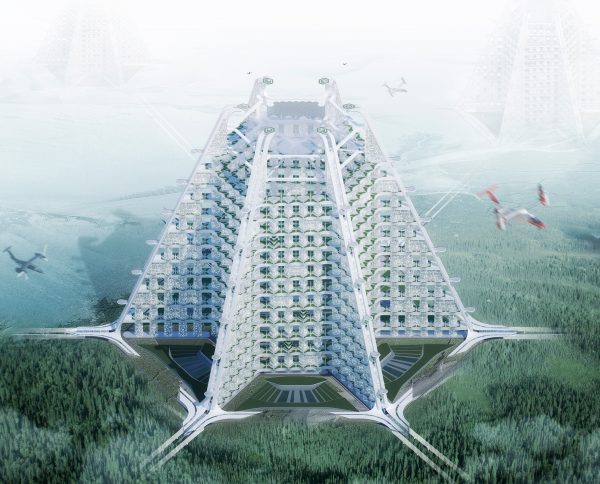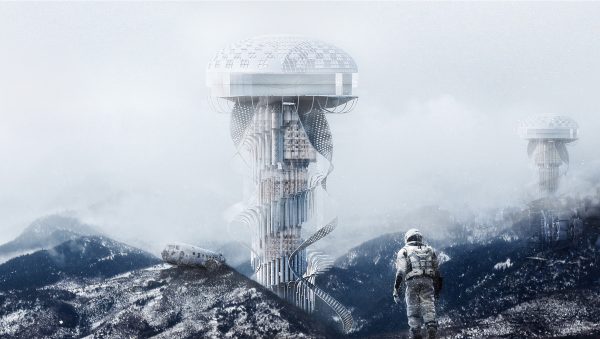Honorable Mention
2018 Skyscraper Competition
Gorproject
Philip Nikandrov
Stepan Kukharskiy, Aleksandr Muraviev, Ivan Mylnikov, Vadim Zamula, Vladimir Travush
Russia
The UN is warning that melting polar ice due to global warming will ultimately redraw the world map within a century. One of the biggest resulting threats around the world is sea-level rise affecting many coastal megapolises, including Shanghai, Osaka, Alexandria, Saint-Petersburg, New York , London etc., and even devastating overpopulated countries such as Bangladesh. Building our cities vertically seems to be the key to salvation not only for coastal population but also for human civilization in general, as the vertical urbanization is the only way to save the land (main natural resource of the planet) from the plague of expanding horizontal urbanization. Stacking the urban blocks with associated infrastructure, recreation and parkland in a third dimension in multiple tiers and levels can increase the city density without compromising life quality and standards and even improving them at height with fresher air, better daylighting and spectacular views.
Project 1111 is the 1111-metres high sustainable vertical city with over 300 floors stacked in fifteen 20-storey tiers with hanging gardens and parks. Based on hexagon plan with 6 wings attached to spiral hexagon structure it creates the mix of transportation modes, including highways for cars (that can drive up to the top level), vertical transportation (zonal elevators and transiting express shuttles), airborne (copters/drones) and vacuum tube trains. The 350,000 population at 10,5 million sq.m. of total gross area (or 30m2 per capita – the comfortable living standards for a vertical urban habitat) are accommodated at 1.4km2 land plot. Read the rest of this entry »

























